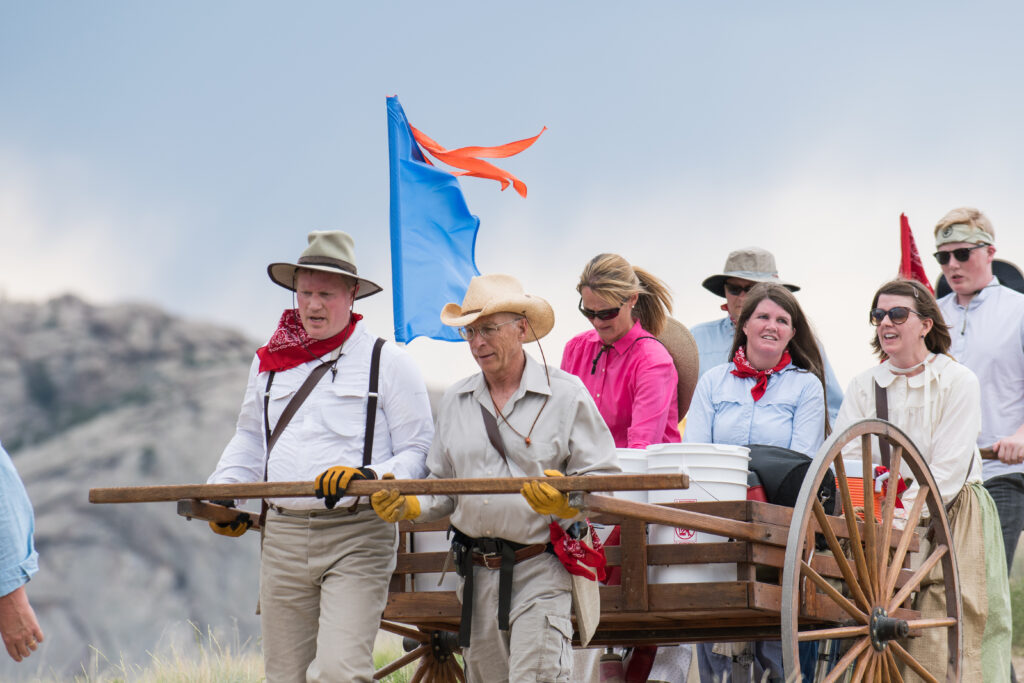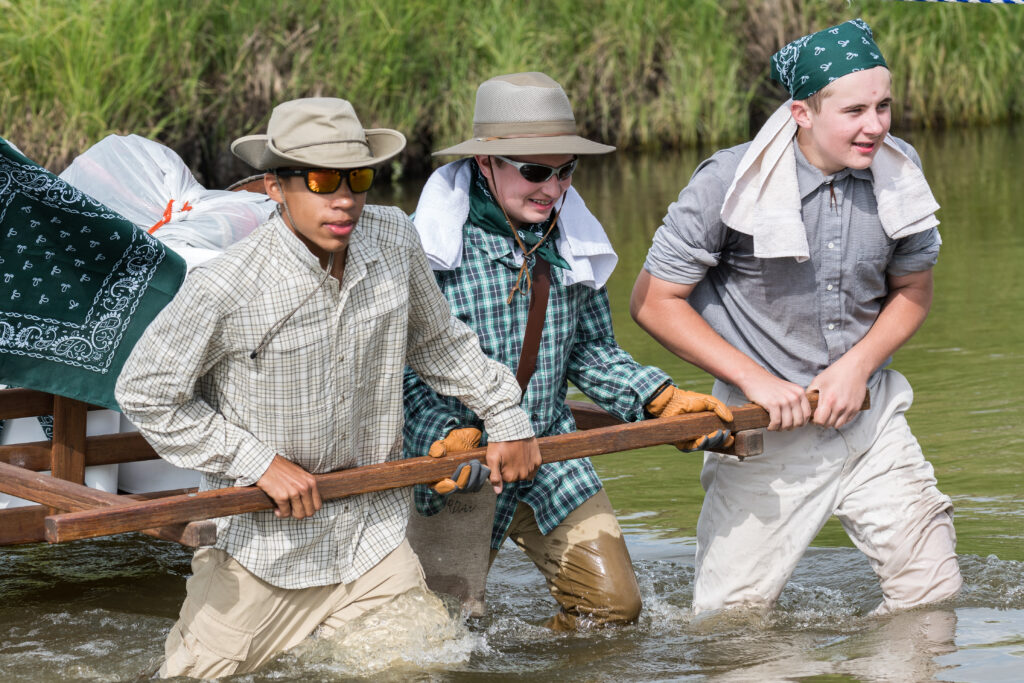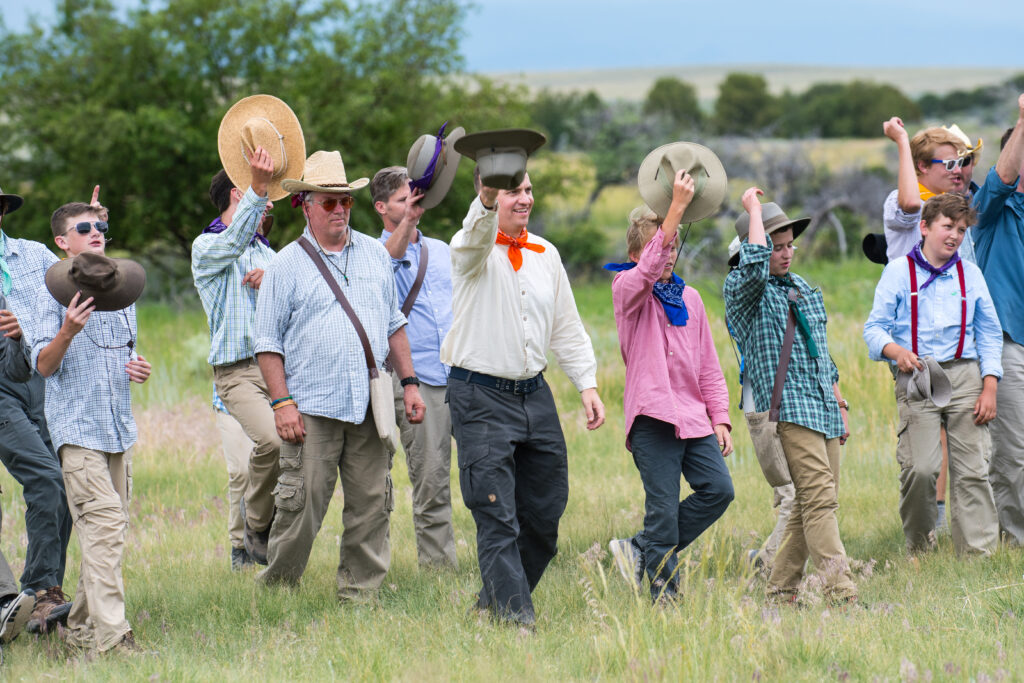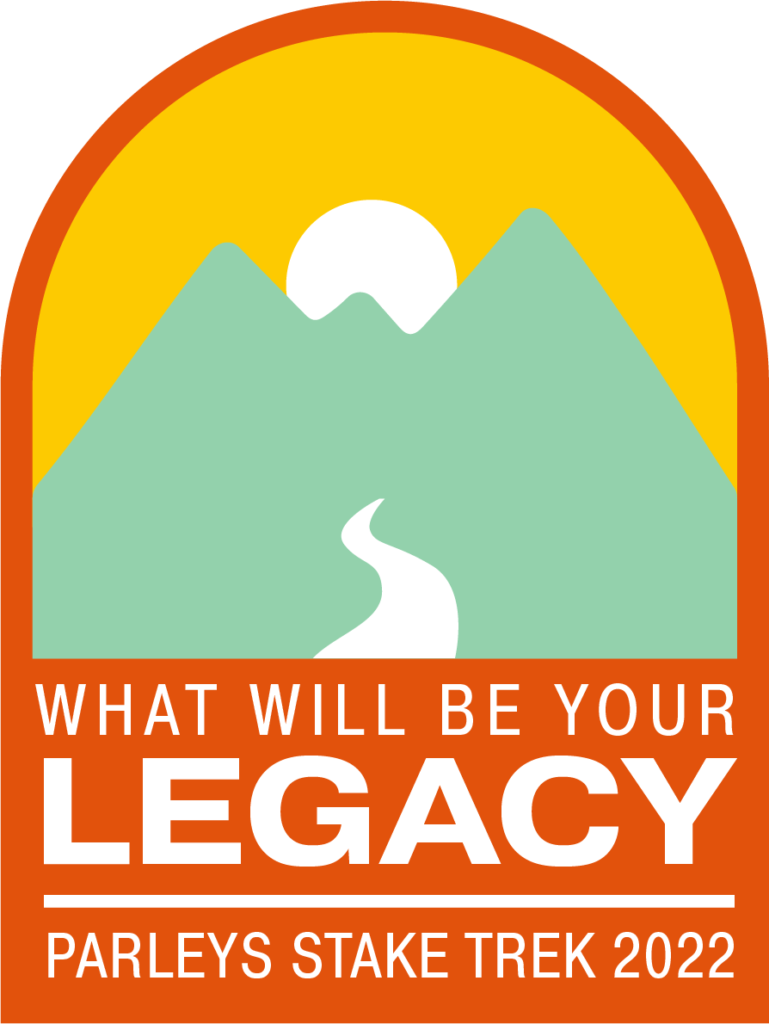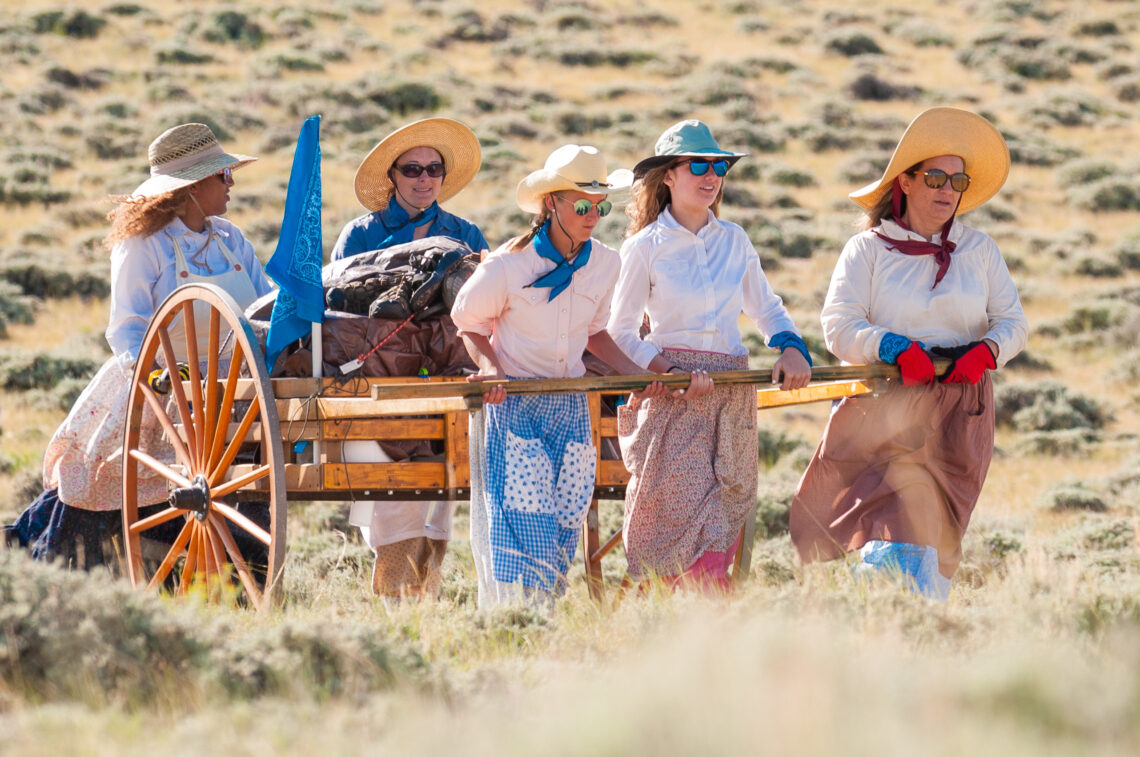
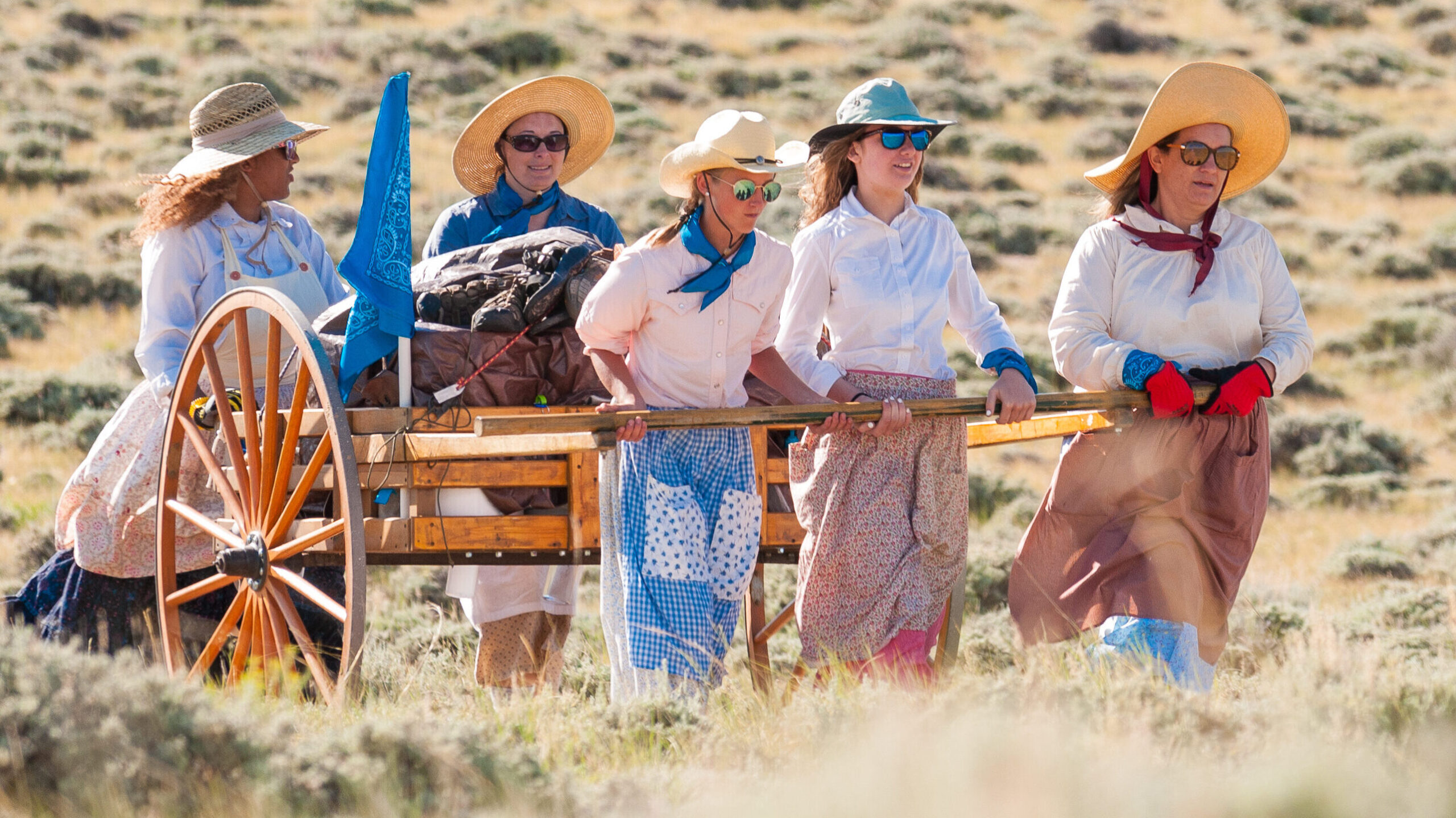
June 13-15
Trek Clothing
Dressing in pioneer clothing can have a tremendous impact on the spirit of the trek. Wearing pioneer clothing is not required on trek, but highly encouraged. Wearing pioneer clothing takes us out of the everyday world and can help us relate better to what the pioneers experienced. We don’t want the trek clothing to be a burden. Most items can be borrowed or found at second-hand stores. The following information is to help you properly prepare your clothing needs for trek.
All Trekkers
- Shoes: Comfort is most important! All trekkers should bring well broken-in shoes. Sturdy running or walking shoes are recommended. Do not wear hiking boots unless you have taken at least 2 months to break them in.
Men’s Clothing:
- Shirts: Men’s shirts were worn loose. Plain colors were common, but stripes or plaids were also used. Light colors will be coolest. Choose something larger than a regular fit, with LONG sleeves. You may find an old shirt from your grandpa’s or dad’s closet. Maybe even your own closet. To make it look more like a pioneer, a simple method of trimming/cutting the collar and picking the pocket off with a seam ripper can be shown to you. (view sample shirts on website)
- Pants: Pants were also worn loose. Cotton pants work great. Colors can include blue, black, gray, browns, especially beige and tan. Choose rather loose fitting through the crotch and thigh area to add comfort in walking. As a reminder, no jeans are to be worn.
- Hats: Men’s everyday hats ranged from cowboy hats, straw hats, wide brimmed low felt hats, or round crowned hat. Don’t wear a baseball hat. A hat is strongly encouraged to avoid sunburn
- Vests (optional): If desired, thrift stores are a great option to find a vest. Vests can also be sewn.
Most every clothing item on the men’s clothing list can be found at a second-hand store, borrowed, or right out of their own closet.
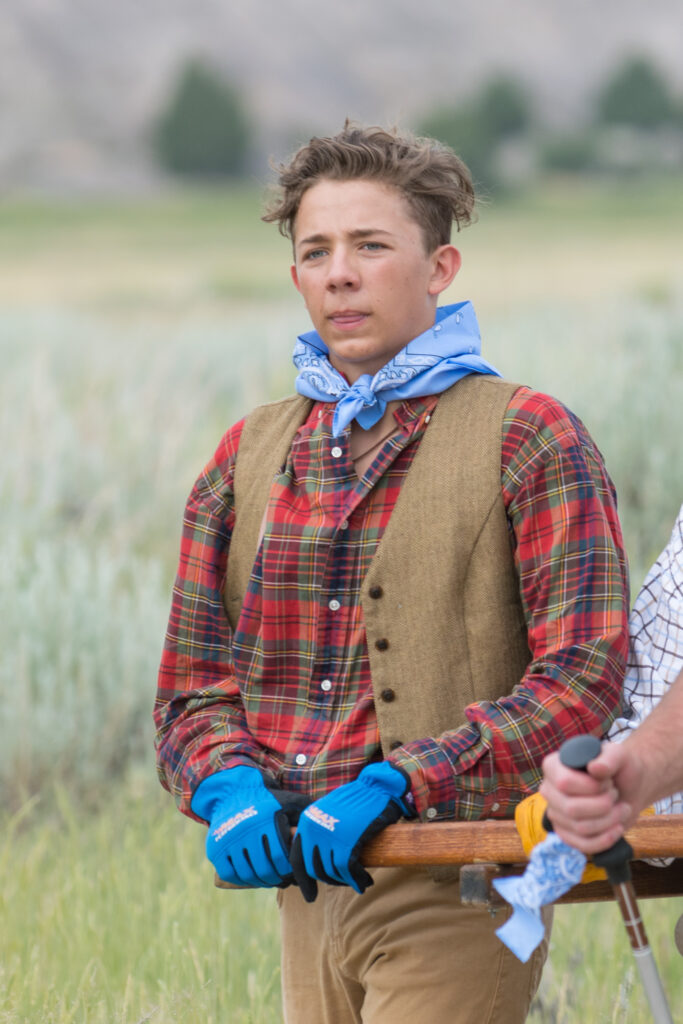
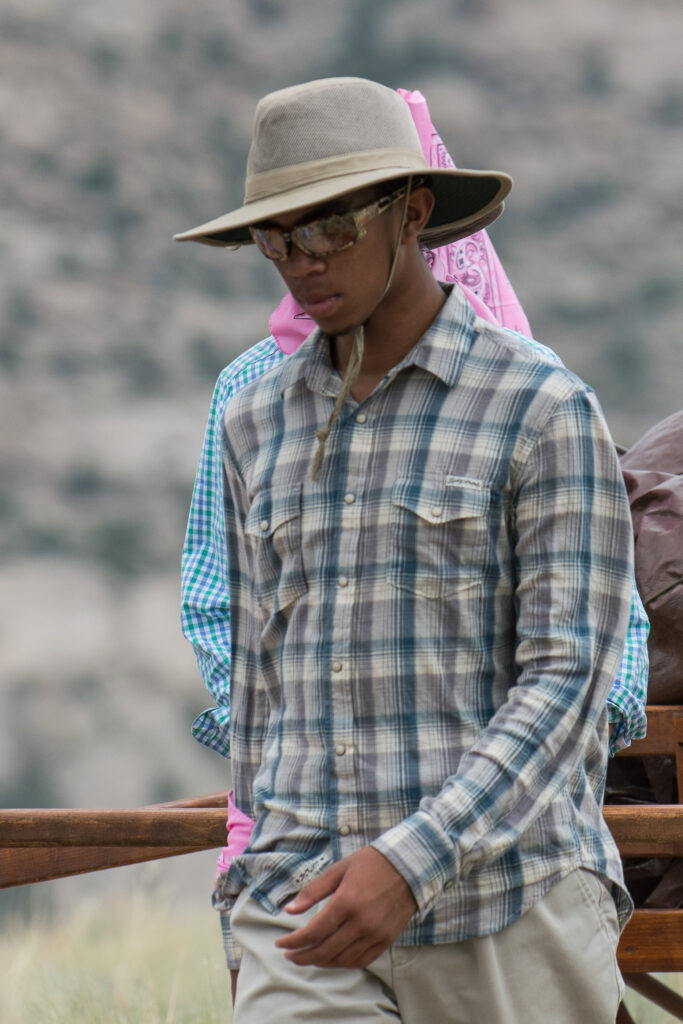


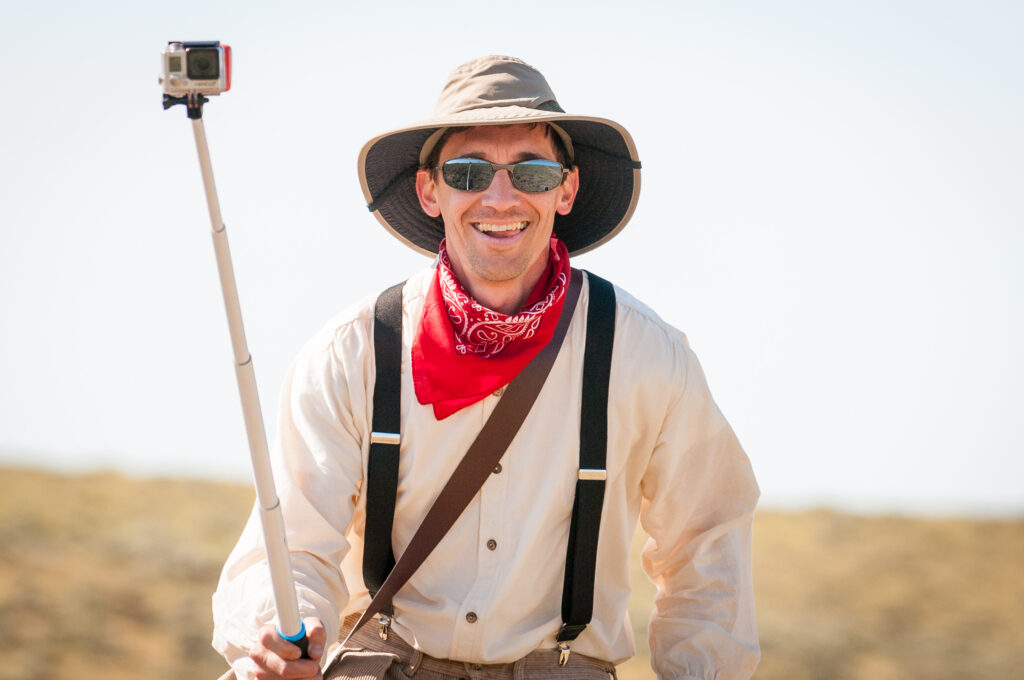
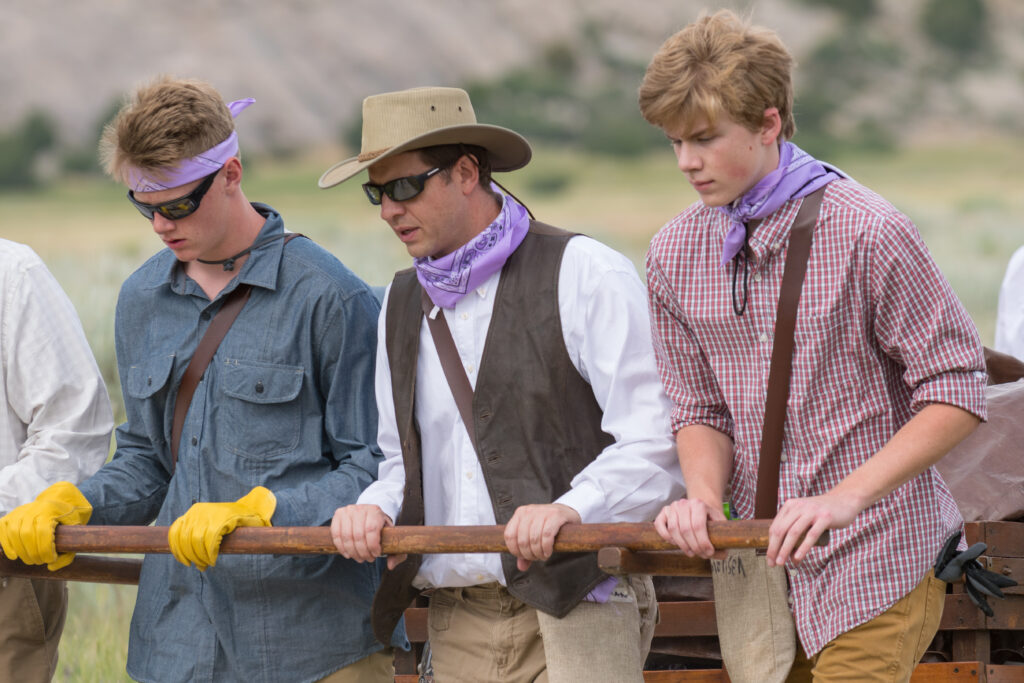
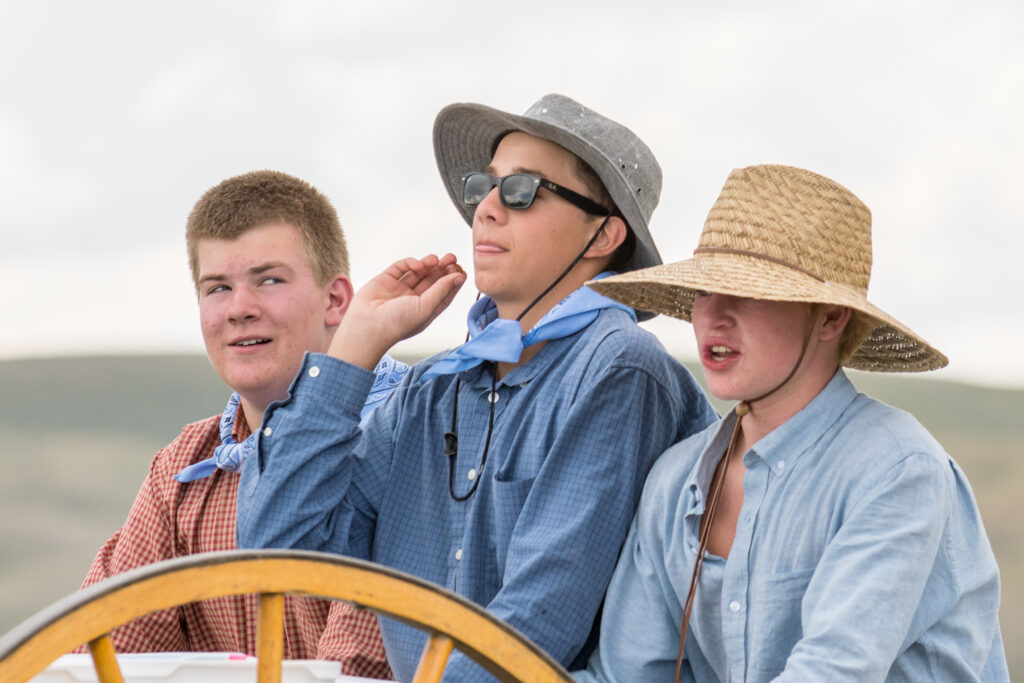
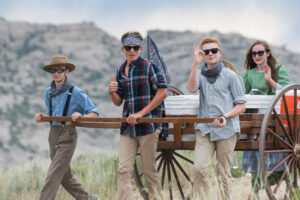
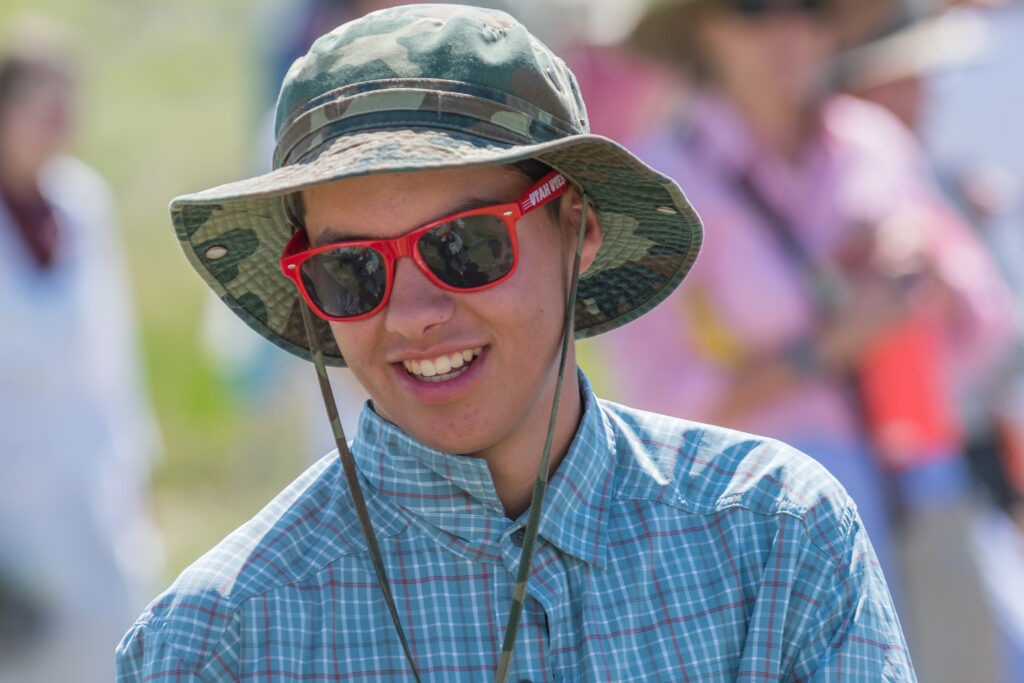
Women’s Clothing:
- Dresses: Back then, women wore floor length dresses, some with ruffles. The sleeves were full, and long, with buttons or bands at the wrist. Necklines were usually high, with buttons up the front. Fabrics were cotton in solid colors or small print.
Experienced pioneer trekkers today have found that dresses or skirts should be mid-calf to just above ankle in length. This helps the women to not trip over their skirts while pulling.
- Skirt & Blouse: Long skirts & Blouses were also worn by pioneers. Solid or print fabric skirts can be sewn for a very low price. Blouses of all colors can be found at any second-hand store (or even in your own closet). A simple method of cutting the collar off will make any blouse a pioneer style.
- Spandex shorts / Exercise leggings: It is strongly recommended to wear longer spandex shorts or exercise leggings under skirts or dresses to avoid chaffing. Bloomers were worn in the pioneer days and can also be worn.
If interested in sewing a dress, skirt, bonnet or apron, many pattern options can be found online.
- Aprons are strongly encouraged: The standard apron was six to twelve inches shorter than the skirt length. It gathered at the waist and tied. Daytime aprons were made of calico remnants. Sunday aprons were made from white fabric and did not have a bib. For trekking today, large deep pockets are helpful to carry things along the trail
For trekking today, large deep pockets are helpful to be able to carry different by along the trail. An apron can be made out of a pillowcase or there are patterns available.
- Bonnets or hat: Women wore bonnets whenever they were outside. They were made of cotton with a deep stiffened brim and back ruffle to protect the neck. They could be white, plain colors or a print, but they never matched the fabric of the dress. A hat straw hat or wide brimmed hat can also be worn. A hat or bonnet are important on trek to give protection from the sun. If windy, bonnets or hats with ties are helpful because they are secure.
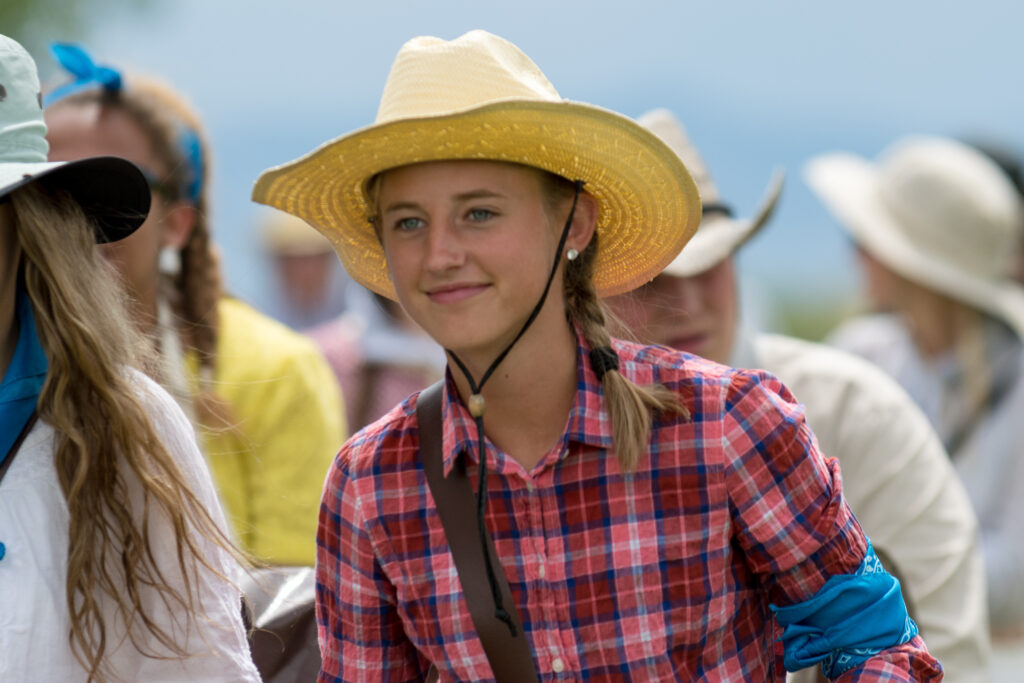
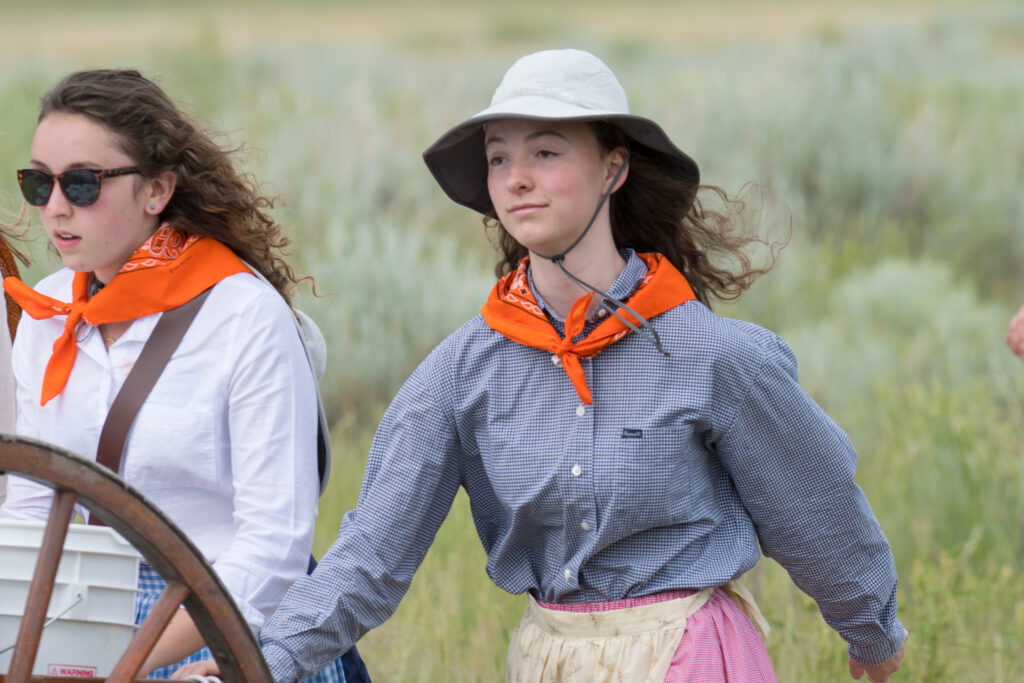
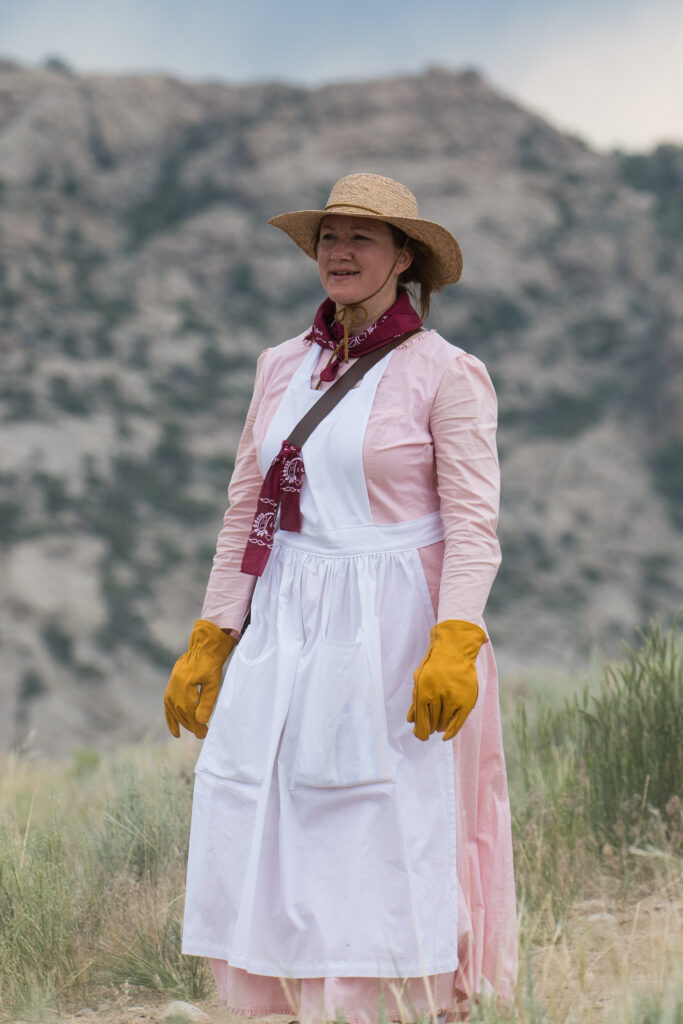

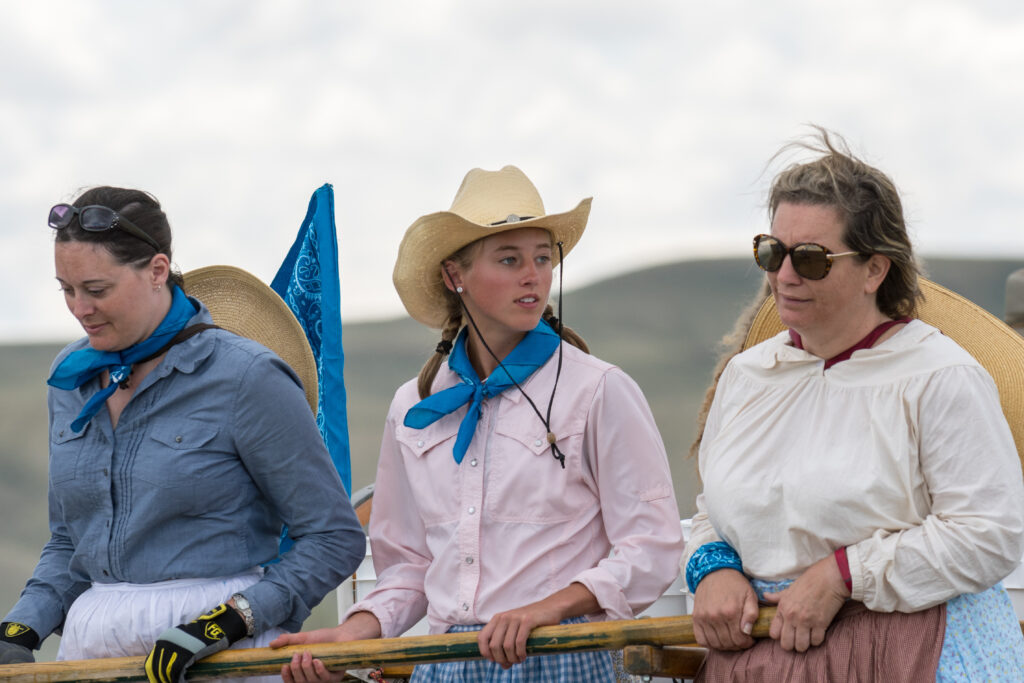
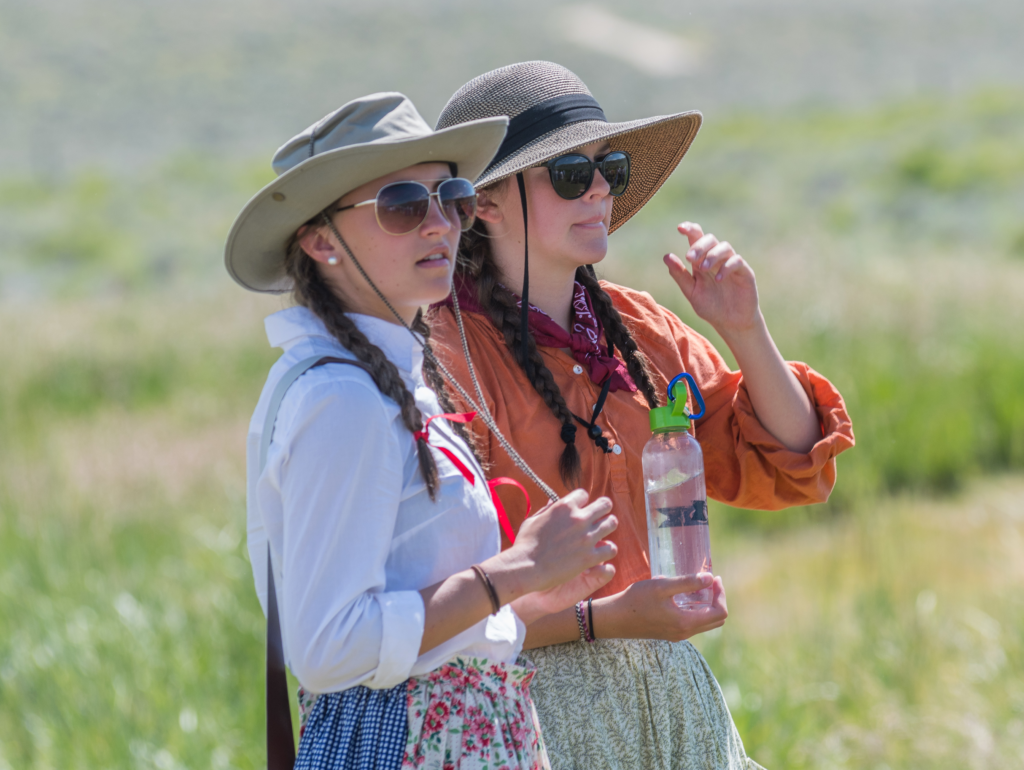
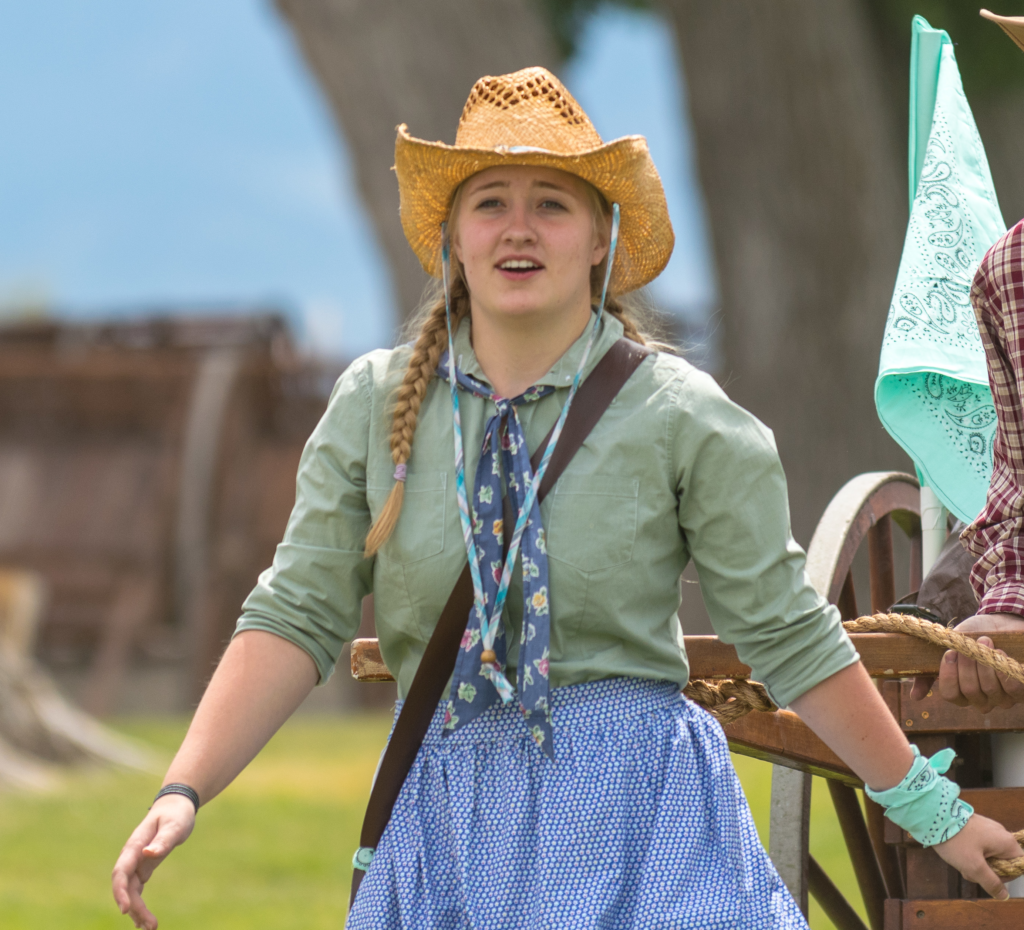


Clothing Patterns
Simplicity: www.simplicity.com
Women’s Simplicity Patterns – 5041 & 5375
Men’s Simplicity Patterns – 5023 & 5035
Butterick: www.butterick.com
Women’s Butterick Patterns – 4570 & 3992
Men’s Butterick Pattern – 3896
McCall’s: www.mccallpattern.com
Women’s McCall Patterns – 3669 & 4548
The Historical Pattern Company: www.pastpatterns.com
Various men’s and women’s patterns are shown on this website.
Photos on this page were provided by Ben Haslam. To see more go to www.haslamphotography.com.
